Introduction
Assessing the value of a business is a process in the corporate realm. Be it for mergers and acquisitions or fundraising efforts.It's not about crunching numbers or analyzing financial stability; it also delves into the companys future potential and competitive positioning.Estimating a companys value entails examining factors, like market share trends,inventive abilities and profit sustainability.
Different ways exist to evaluate a companys worth such as asset focused approaches or those based on income and market analysis as these different strategies offer viewpoints by factoring in various elements, like tangible assets and potential earnings influenced by market trends or future prospects so the choice of valuation method rests upon the industry sector financial health and individual situation of the business.
To determine the value of something requires a deep examination and careful study of important aspects like market standing and competitive advantage, alongside brand recognition.its crucial to grasp valuation techniques well in order to make wise choices leading to lasting prosperity.
Why Valuing a Company is Important
Assessing a business is essential in the business realm for activities such as mergers and acquisitions and securing funds – it's fundamental for making decisions and fair deals alike. An organization's worth extends beyond figures; it reflects its financial position and future potential that play a crucial part in establishing prices and negotiating conditions effectively.
In the software sector as an example highlights the importance of evaluating a firm's standing in the industry which plays a role. A strong market position achieved through clients and innovative products or technology leads to a competitive advantage. An assessment includes examining market share trends in growth and how sustainable their competitive edge is, over time. For software firm that keeps innovating and adapting to changing demands by investing in research and development or making strategic acquisitions is usually valued more highly.
The situation of WeWork showcased this idea according to Valuetainments report when the organization faced challenges, in meeting bond interest payments and underwent renegotiations that underscored the significance of stability and awareness of market positioning. It serves as an example that an organization's worth is not fixed but rather influenced by shifting market sentiments and internal financial conditions.
Furthermore, an examination of the 'quality of earnings' (QoE) is crucial for purchasers, investors, and lenders to assess the excellence and sustainability of a firm's profits. The Q o E looks at the dependability and possible dangers associated with the organization's stated results offering a comprehensive insight into revenue origins and their durability. The instance of an enterprise emphasizing repeat income flows and the hazard of client focus emphasizes the significance of this evaluation.
In the end, evaluating the worth of an organization surpasses carrying out a deal; it also entails strategizing for future achievements and growth. This thorough procedure entails assessing factors such as reputation in the industry, ability to innovate, financial strength, and consistent profitability to establish the true worth of a company.
Overview of Company Valuation Methods
Assess a company's worth involves a mix of knowledge and insight into market trends. It's quite an art form! Among the various approaches to assess a company, the Berkus Method stands out; it is renowned for its ability to evaluate the potential of startups in their early phases. This method was created by investor Dave Berkus back in the 1990s. Focuses on assigning value to important elements of a young enterprise like innovative ideas or strong leadership. Especially useful when traditional valuation techniques don't quite measure up due, to limited revenue streams.
It's important to grasp the significance of money and pre money valuations since these numbers impact how equity is divided and showcase a company's worth before and after receiving investments. This understanding plays a role, in accurately determining equity stakes and shares ownership percentages helping investors and business leaders navigate the intricacies of managing cap tables effectively.
The market standing of a software firm serves as a metric for assessing its value in the industry landscape.The presence of a market position is typically marked by factors such as strong brand awareness and customer loyalty which can indicate a lasting competitive edge. Companies that continually evolve and adjust to shifts, in the market tend to receive valuations as they are perceived to be more equipped to seize upcoming prospects.
In the 1992 Berkshire Hathaway Annual Report Warren Buffett emphasized the intricacies of evaluating an organization through discounted cash flow (DCF) pointing out the uncertainties involved in projecting cash flows. To his perspective numerous investors in the software sector lean, towards using revenue multiples as a more feasible valuation measure acknowledging the challenges of making accurate long term financial forecasts.
The significance of property (IP) cannot be overstated when evaluating the value of a software organization is considered crucial. Enhancing the value of the organization can be greatly achieved by protecting and leveraging intellectual property, such as patents, trademarks, and trade secrets. Conducting an IP review is essential in this matter to guarantee that the organization's intellectual property assets are aligned with its strategic objectives and play a significant part in its overall assessment.
In the evolving world of appraisals, it's essential to stay updated on current developments and trends. For example WeWork recent discussions with bondholders to prevent default highlight how corporate choices can greatly influence valuations and financial security. Having knowledge of happenings can provide valuable insights on the financial health and future outlook of organizations, in various industries.
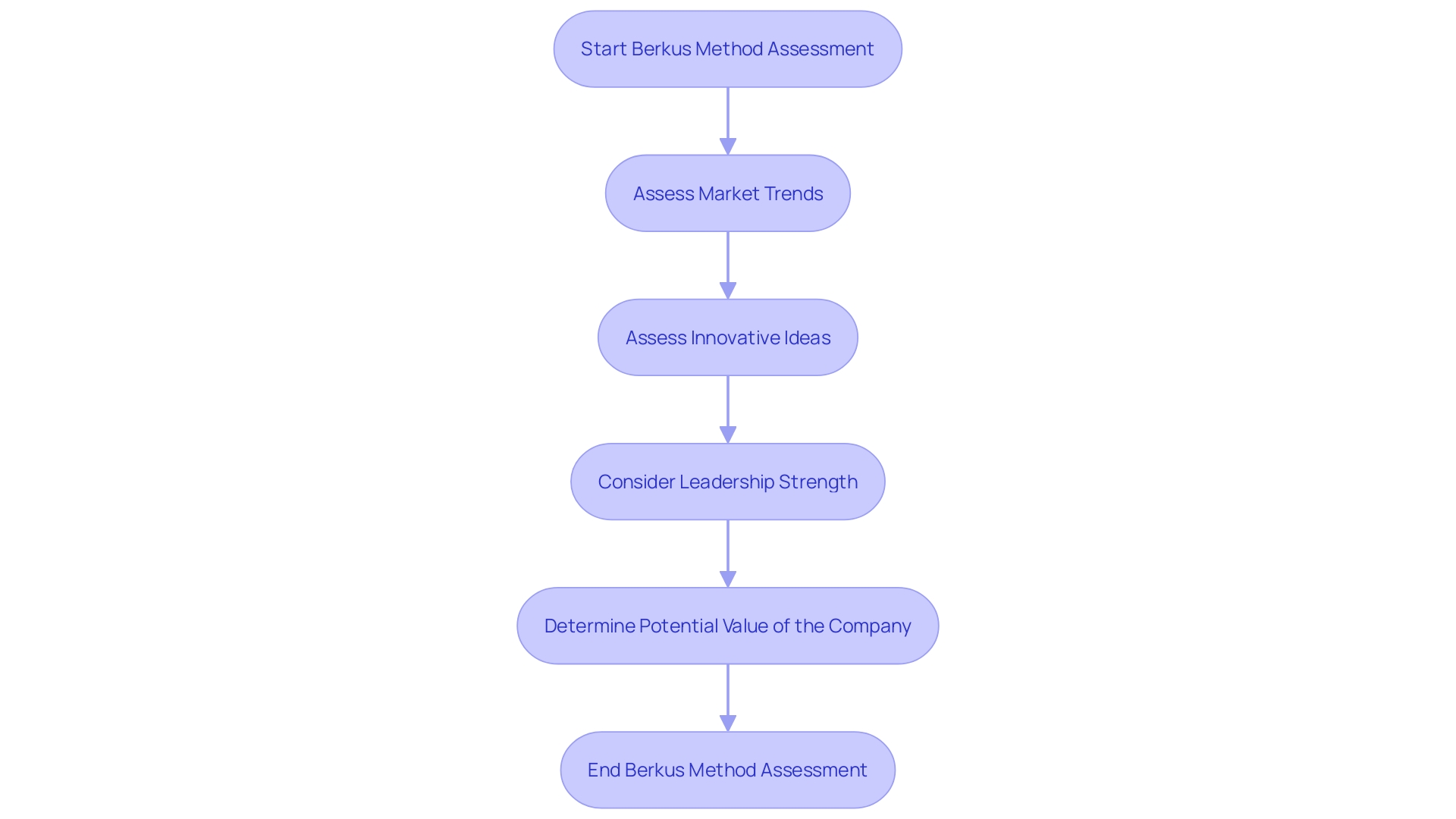
Asset-Based Valuation Methods
When assessing the worth of a firm's assets for enterprises with tangible assets in place, it is crucial to utilize asset-based valuation methods that carefully take into account the significance of different assets such as real estate and manufacturing equipment that act as the cornerstone for a firm's financial position. In the realm of real estate evaluation goes beyond purchase prices by delving into all related expenses to unveil the actual profit potential post project completion. The same principles of cost analysis also come into play when using asset based valuation methods, for enterprises.
The main approaches in this category are the Going Concern Asset Based Method and the Liquidation Asset Based Approach. The former assesses the worth assuming the enterprise will continue operating while the latter takes into account the potential proceeds, from liquidating the organization's assets. These methods are significant. Their suitability varies depending on the current condition and future outlook of the business.
For instance, the importance of a technology firm may rely on its position in the market and competitive advantages, such as customer allegiance or proprietary technology. The Going Concern approach would be more effective in this scenario since it can take into account the assets that often impact the worth of a technology firm. Conversely, certain sectors that prioritize assets might opt for the Liquidation method to gain better understanding.
In todays world of instability and constant technological advancements having a clear grasp of a company's assets is crucial. The changing interest rates and the emergence of asset management tools such as Liberia emphasize the fluidity of asset valuation. Additionally, the ongoing fluctuations in cryptocurrency regulations highlight the difficulties in assessing the worth of assets, underscoring the necessity for dependable and adaptable valuation methods.
In summary, asset based valuation techniques offer a foundation for evaluating the worth of an enterprise; nonetheless, it is essential to employ them with an understanding of the particular circumstances of the organization and the general economic environment. Whether you are dealing with a property development venture or an innovative tech firm these approaches are instruments that enable investors and proprietors to make knowledgeable choices.
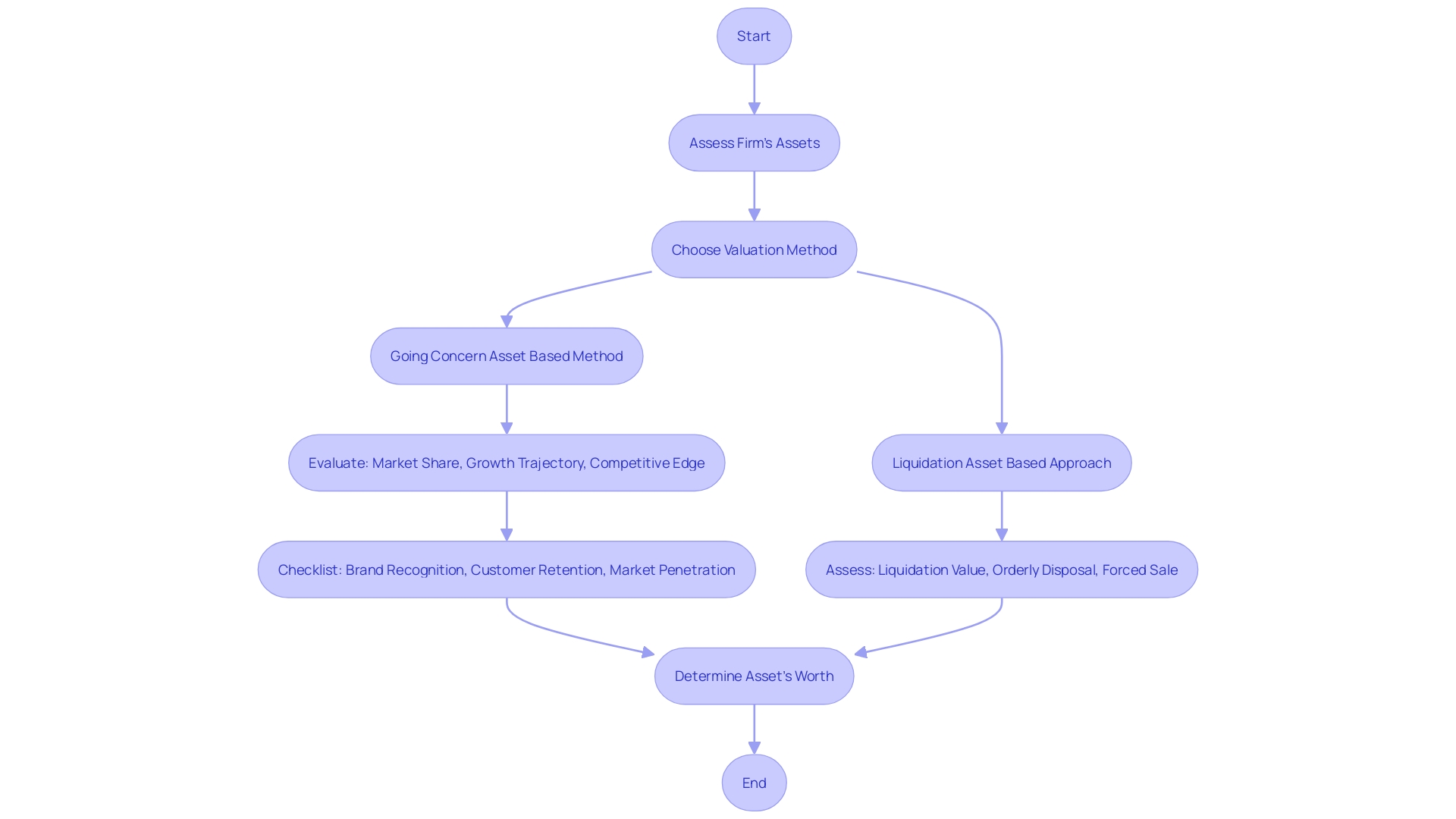
a. Going Concern Asset-Based Method
The Going Concern Asset Based Method offers a technique for evaluating an enterprise by highlighting the net asset value (NAV) within the context of an active corporate entity. This valuation approach takes into consideration both the tangible and intangible assets while comparing them to liabilities and including shareholder equity. The method is based on the belief, in the continuity of business operations. Forecasting the company's capacity to maintain its activities and expand in the long term.
This approach corresponds to the goal of maximizing value and plays a significant role in shaping investment choices and financial plans that impact shareholder profits directly or indirectly. For businesses operating in rapidly changing industries such as technology and software it is crucial to consider the wider industry landscape and competitive strengths. Elements like market presence, innovativeness, customer trust and brand power are crucial for gauging an organization's market worth, beyond just its financial statements.
Business trends are evolving to take into account a perspective of corporate worth that encompasses financial worth along with natural resources and human and social factors as well. This change in how companies are assessed demonstrates a greater acknowledgment of sustainability and the creation of enduring worth throughout time. It can have an impact on how competitive an organization is and how resilient it remains. By embracing these comprehensive methods of valuing businesses, organizations can make better decisions, for everyone involved and accurately demonstrate the actual value they bring to society.
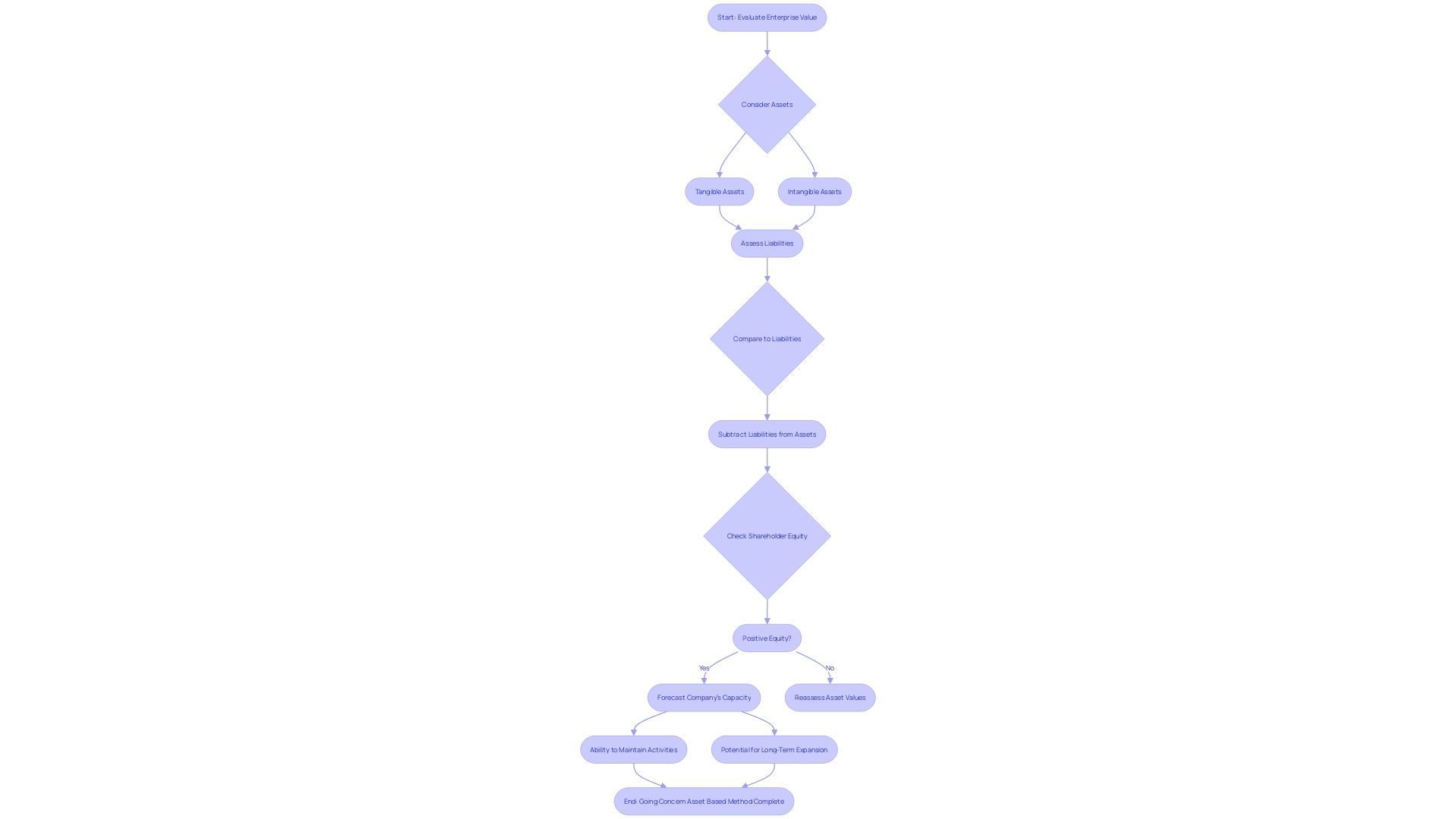
b. Liquidation Asset-Based Approach
In assessing a firm's worth during times like liquidation situations, the Liquidation Asset Based Approach becomes crucial for providing insight into its value. This method of valuation involves estimating the proceeds that could be obtained from selling off assets and offsetting them against the firm's liabilities. This strategy is particularly relevant for businesses facing difficulties or contemplating closure due to unprofitability. The report reveals the truth about the firm's present condition and provides a practical outlook on the potential gains from a market sale—a vital aspect, for both creditors and interested purchasers alike to carefully contemplate.
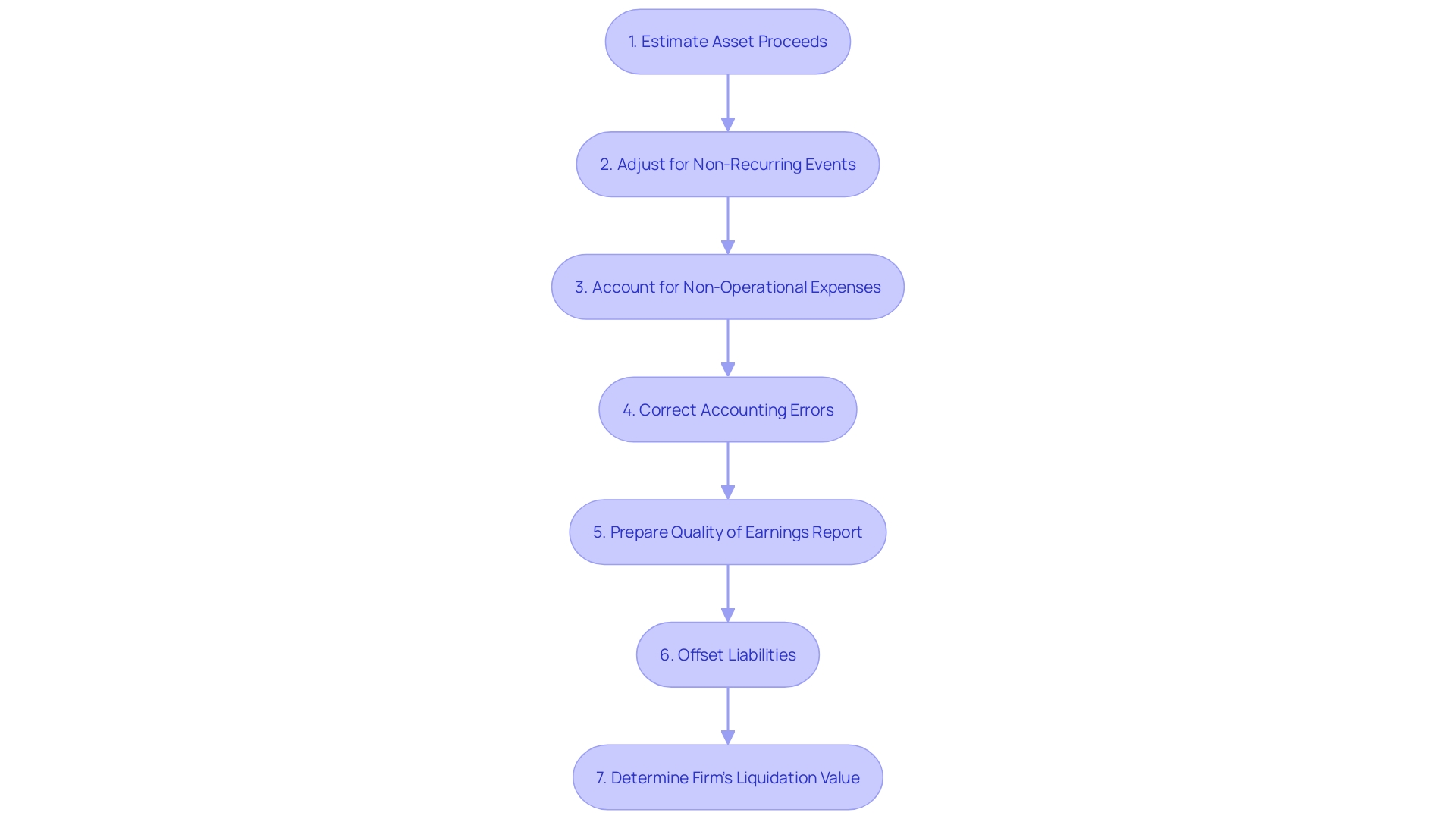
Income-Based Valuation Methods
When assessing a company's worth, consider utilizing income-based valuation methods that are vital for businesses, with consistent revenue and strong profitability. These approaches focus on predicting earnings or cash flow. One prominent method is the Discounted Cash Flow (DCF) Analysis, which forecasts cash flows and adjusts them to present amount by applying a specified rate of return. This approach provides understanding and is particularly applicable to tech companies that maintain a strong presence by emphasizing the nuances of competitive advantages such as a loyal customer base and groundbreaking product offerings or advanced technology.
Moreover the Earnings Capitalization Technique is an income focused approach that assesses a firms prospective profitability by considering its current earnings and a capitalization rate formula For enterprises, in the mature growth stage this technique provides a swift and effective way to assess value taking into account the company's market position growth direction and the durability of its competitive advantage
The Income Multiplier Method is frequently used in the context of enterprises as well. It involves multiplying a profit amount by a factor that considers the industry and economic conditions.This method provides a way to value companies that are less intricate, in nature.
The Dividend Discount Model (DDM) centers on businesses that distribute dividends and establishes their worth by forecasting dividends and reducing them to their present-day valuation. This model is particularly valuable for enterprises where dividend yield and growth can be predicted with a degree of assurance. It offers an overview influenced by innovation initiatives or strategic acquisitions that might drive future growth prospects.
Through the application of these techniques that evaluate revenue levels as a foundation for appraisal objectives; organizations can gain insight into their fiscal condition by taking into account not only their current earnings but also their intangible resources and market standing - crucial elements, in establishing enduring worth and instilling confidence in stakeholders.
a. Discounted Cash Flow (DCF) Analysis
Discounted cash flow (DCF) analysis is a method used to assess a firm's worth through forecasting its future financial gains and adjusting them to reflect their present significance. This technique takes into consideration the importance of the time value of money which emphasizes that money in hand today is more valuable than the amount in the future. A concept that has roots in the ancient wisdom of Aesop's fable 'A bird in the hand is worth two, in the bush.'When applying DCF analysis in world scenarios it requires making detailed forecasts of cash flow by factoring in net profits tax consequences changes in operational funds and investments in, assets These estimations are then adjusted using a rate that takes into account the risk associated with the investment and the capital expenditure required.
Generating cash from a business's activities through operating cash flow is crucial for assessing its financial strength and true worthiness as a business entity. Having a cash flow indicates the organization's effectiveness in managing its day-to-day operations and expansion without relying on outside sources of funding. This becomes especially important in today's landscape where financial experts recommend having an emergency reserve that exceeds the traditional six months worth of expenses to emphasize the significance of liquidity and the capability to handle unforeseen financial challenges.
Evaluating the value of a software business is closely connected to its position in the industry. Reflects its competitive edge potential which may be evident through a loyal customer base innovative offerings or cutting edge technology advancements Examining factors, like market share expansion trends and long term competitiveness is crucial employing a criteria that considers brand awareness customer loyalty rates and market outreach Firms that persist in innovating either by investing in research and development or making strategic acquisitions are typically valued more highly because of their proactive approachability and ability to adjust to market shifts.
Warren Buffett once discussed the limitations of Discounted Cash Flow (DCF) analysis in his 1992 Berkshire Hathaway Annual Report by pointing out its soundness but practical complexities due to the numerous assumptions involved in the process. This perspective is also shared within the software industry where forecasting future cash flows beyond a short term horizon can be uncertain and challenging for professionals prompted to resort to using comparative valuation metrics instead. Despite these obstacles and uncertainties associated with DCF modeling it continues to serve as a tool in asset valuation by providing a systematic framework for estimating an assets worth based on a thorough evaluation of anticipated cash flows, throughout its lifecycle.
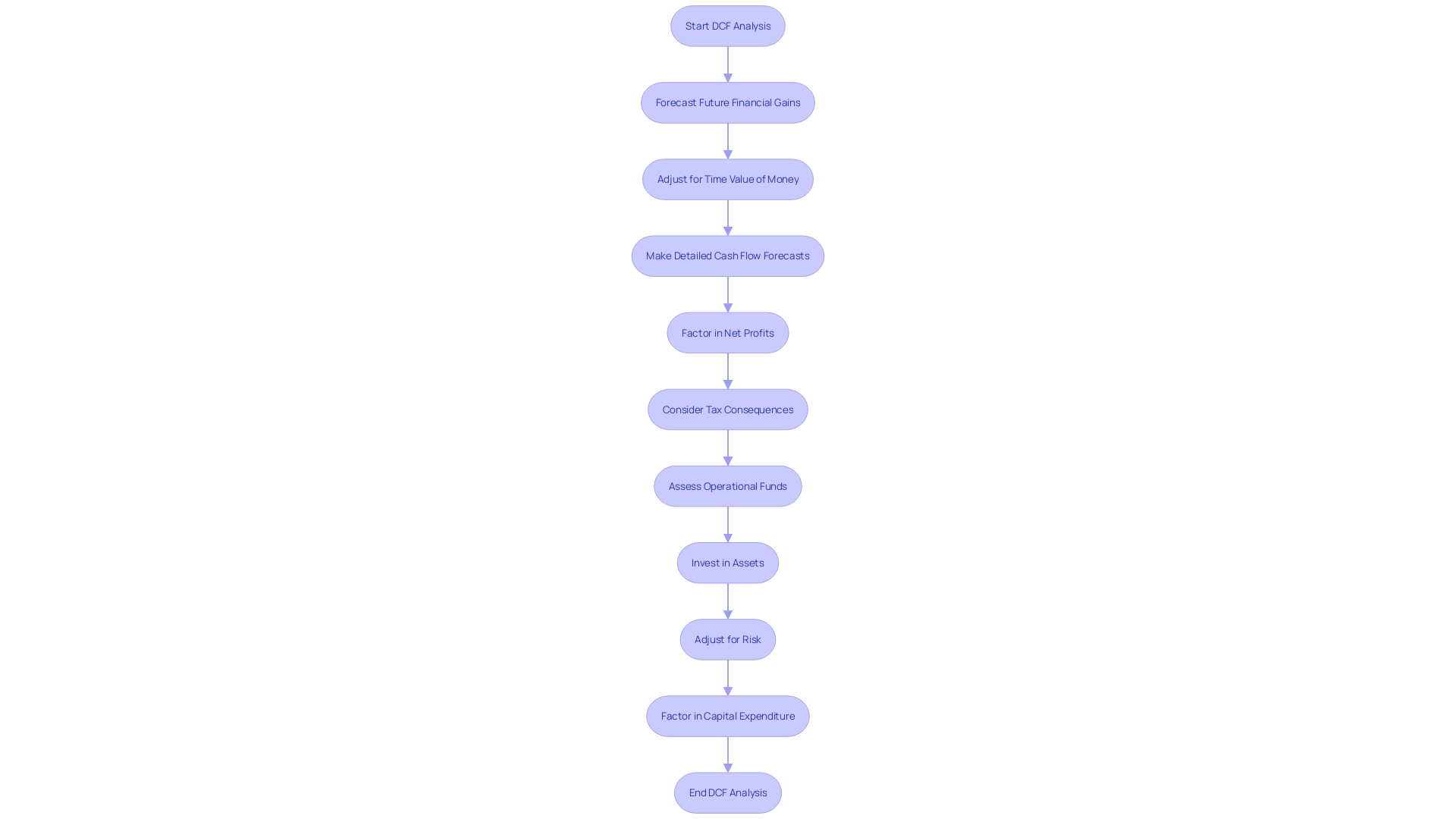
b. Capitalization of Earnings Method
The methodology of Capitalizing Earnings is an assessment technique that depends on estimating future earnings and then dividing them by a capitalization rate to evaluate the current worth of a corporation's earnings flow. This rate is crucial as it reflects the return expectations of investors. In the context of corporate finance considerations the primary objective for any organization is to enhance value beyond mere profits, which frequently entails striking a thoughtful equilibrium between near term earnings and sustained growth. A recent research report by the IASB highlights the various approaches companies employ in reporting; out of 100 surveyed firms examined, there are nine distinct methods utilized to calculate operating profit—emphasizing the importance of a standardized approach like Capitalization of Earnings for investors interested in comprehending firm value clearly and consistently. The reality that earnings per share (EPS) a financial indicator along, with other metrics paints a quick picture of a firm's profitability and influences investment choices should not come as a surprise. It's crucial to consider market positioning and competitive advantage alongside advancements and responsiveness to industry needs in the software industry where innovation plays a pivotal role in driving value creation. Evaluating property (IP) comprehensively enhances our grasp of the situation as the significance and robustness of a company's IP assets play a vital role in determining its overall worth. Therefore the Capitalization of Earnings Method goes beyond number crunching—it involves crafting a story, around financial stability, strong market presence and forward thinking strategies.
c. Income Multiplier Method
In the world of business valuation techniques lies the Income Multiplier Method. A trusted method that relies on a firm's earnings to establish its value accurately. The process usually entails applying multipliers to financial metrics such as EBITDA or net income. These multipliers are not set in stone. Instead tailored to conform with industry standards and specific company characteristics. For example, in the changing software sector, a company's value is often associated with its share in the industry and competitive advantage. Establishing a presence can arise from having loyal customers who have faith in your brand or providing innovative products that distinguish themselves from the competition and utilizing advanced technology effectively. All of which play a role in determining the value of a business entity. To comprehensively evaluate a firm's suitability entails analyzing its share dynamics and growth trajectory as signs of its sustainable edge against competitors in the industry landscape; factors such as brand awareness and customer allegiance can provide valuable perspectives into this assessment procedure. Furthermore, thorough examination into the extent and scope of a firm's intellectual property holdings is essential as it can greatly impact its worth by highlighting its strategic position within the business landscape. Emphasizing the significance of performing a thorough intellectual property audit to understand its influence on shaping the organization's competitive advantage. In a paced industry like this one, an organization's ability to innovate and adapt to changing market trends is a valuable asset that can enhance its value significantly during the evaluation phase. This approach highlights the importance of selecting the relevant data and analyzing it with a high level of expertise to understand the unique economic and social traits of an organization, within its local and societal context.
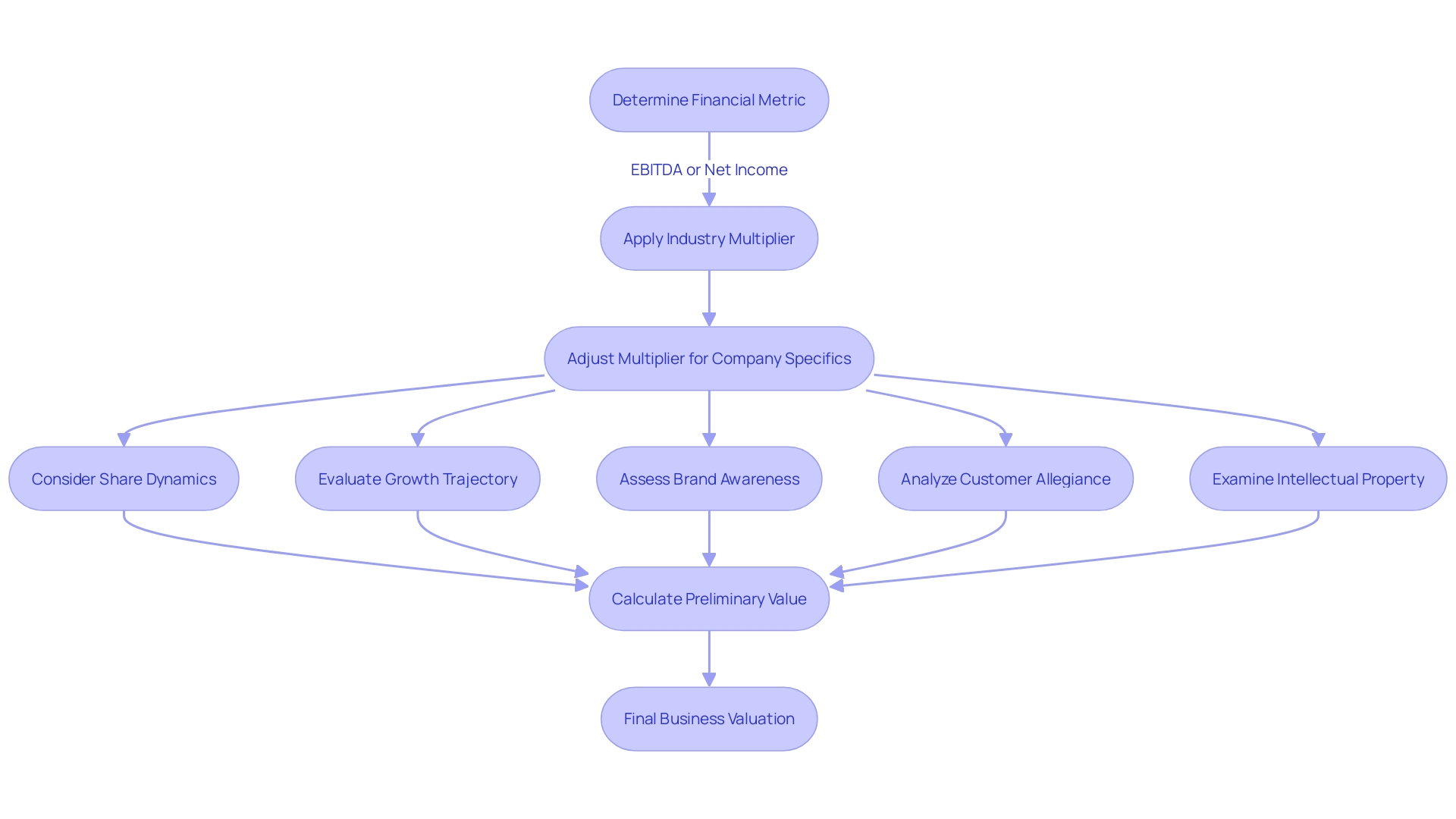
d. Dividend Discount Model (DDM)
The Dividend Discount Model (DDM Sometimes abbreviated as DDM or DDMs plays a role in evaluating companies worthiness of investment and is particularly important for corporations like the renowned 'Berkshire of Insurance' known for its strong corporate ethos and decentralized operational structure By examining future dividend projections and converting them into their current value DaMs provide investors with a useful means to grasp a firm's true value Firms that consistently share profits, with shareholders can greatly benefit from this analysis tool.
Companies that regularly pay dividends in a manner are ideal candidates for DDM analysis. Just like the fifth largest independent insurance brokerage in the U.S. for instance! With most of its revenue coming from the U.S. Market and a big chunk earned through commissions (around 70%) this brokerage probably sticks to a dividend policy, over time. This stability makes it easier to make guesses about future dividend growth rates. Something thats pretty essential in DDM calculations.
Furthermore, the models take into account a discount rate that incorporates the effects of risks and the importance of time. Brokers receive commissions between 10 to 15 percent of the premium and growth is influenced by alterations in premium rates and exposure units. These elements are crucial, for predicting dividends and determining a discount rate that balances risk and return effectively.
Companies frequently mention their plans and expected financial results in forward looking statements to emphasize the significance of models such as DDM in investment decision making processes. Though these statements don't ensure outcomes and are merely informative insights, into possible future scenarios and financial performance trends they underscore the necessity of taking into account multiple factors. Including dividend strategies. When evaluating investments.
Research on how businesses manage dividend payments indicates that investors might be reluctant to invest in firms that decrease their dividend distributions as they could interpret these actions as an indication of financial difficulties. This emphasizes the importance of having a well-considered dividend strategy that aligns investor concerns with the financial goals of the firm.
In conclusion, the Dividend Discount Model remains a technique for evaluating the worth of companies that consistently distribute dividends throughout the years.
Market-Based Valuation Methods
When assessing the worth of a business in the context of the marketplace, various valuation methods are used to compare it with entities or transactions within the industry.. These techniques depend on market data to estimate the organization's worth. Some used approaches include Comparable Company Analysis (CCA) Precedent Transaction Analysis, Market Capitalization, and Enterprise Value (EV). CCA involves studying the specifics of comparable publicly traded entities. In contrast to Precedent Transaction Analysis, which examines sales or acquisitions involving comparable enterprises. The overall worth of a firm's shares is denoted by Market Capitalization, whereas EV takes into account both equity and debt to provide a comprehensive assessment of a firm's financial condition.
When examining software firms' performance in the business landscape is essential during the evaluation phase of the assessment process. Considering factors such as share analysis and growth trends is crucial in assessing a firm's value proposition over time. Factors such as customer loyalty and innovative product offerings play a significant role in shaping a firm's competitive edge and long term success. These components ultimately influence an organization's position within the industry. Are essential, in determining its true value. 'Moreover' businesses that consistently introduce ideas. Whether through research and development or strategic acquisitions. Typically receive higher valuations due to their capacity to remain current and adjust to shifts in the landscape.
a. Comparable Company Analysis (CCA)
When beginning to assess the worthiness of a company for investment opportunities, analysts often depend on Comparable Company Analysis (CCA). This method acts as a guiding light helping investors navigate the ups and downs of the market by comparing financial metrics such as price to sales ( P/S) price to. Earnings ( P/E) and enterprise value to. EBITDA ( EV /EBITDA), with those of similar companies that are publicly traded. Through this analysis CCA outlines a range of valuation that reflects the sentiment of the industry.
The pursuit for a startup to achieve 'unicorn' status. Obtaining a valuation exceeding $1 billion. Is now seen as an indicator of success in the entrepreneurial world. Nevertheless, as these once scarce entities become more prevalent, the emphasis is shifting towards establishing cash flow generation as a definitive sign of genuine industry dominance. Assessing a company's cash flow margin over the long run is crucial, in determining its value reflecting the timeless wisdom encapsulated in the phrase 'cash is king.'
In today's evolving landscape, it's essential to comprehend your business's position in the industry. This is particularly valid for tech firms where staying ahead means being innovative and adaptable, to industry trends. To truly gauge your position. You should consider more than just share and growth. It's also important to consider how loyal your customers are. as this reflects your brands strength..
As a result, Cost Center Accounting (CCA) serves a purpose other than simply being a tool, for comparison. It provides investors with a perspective to evaluate a firm's fundamental strengths and future prospects. This approach ensures that the worth of the organization is not solely based on market conditions but also reflects its lasting significance.
b. Precedent Transaction Analysis
Examining transactions is a crucial approach to ascertain a firm's value by examining the financial aspects of recent sales or purchases of comparable enterprises. This approach involves an examination of those transactions to understand the selling price and deal structure used as well as the valuation metrics applied. By looking at a range of data from merger agreements that may cover many years or even decades this analysis provides valuable insights, into the intricacies of mergers and acquisitions deals. Understanding the details of these transactions can help entrepreneurs assess the value of their organization in the marketplace based on actual past deal outcomes. This approach doesn't simply mirror market sentiments. Also takes into account the financial status and prospects of comparable enterprises. It provides a benchmark for owners exploring alternatives, such as selling their company or pursuing mergers or investments.
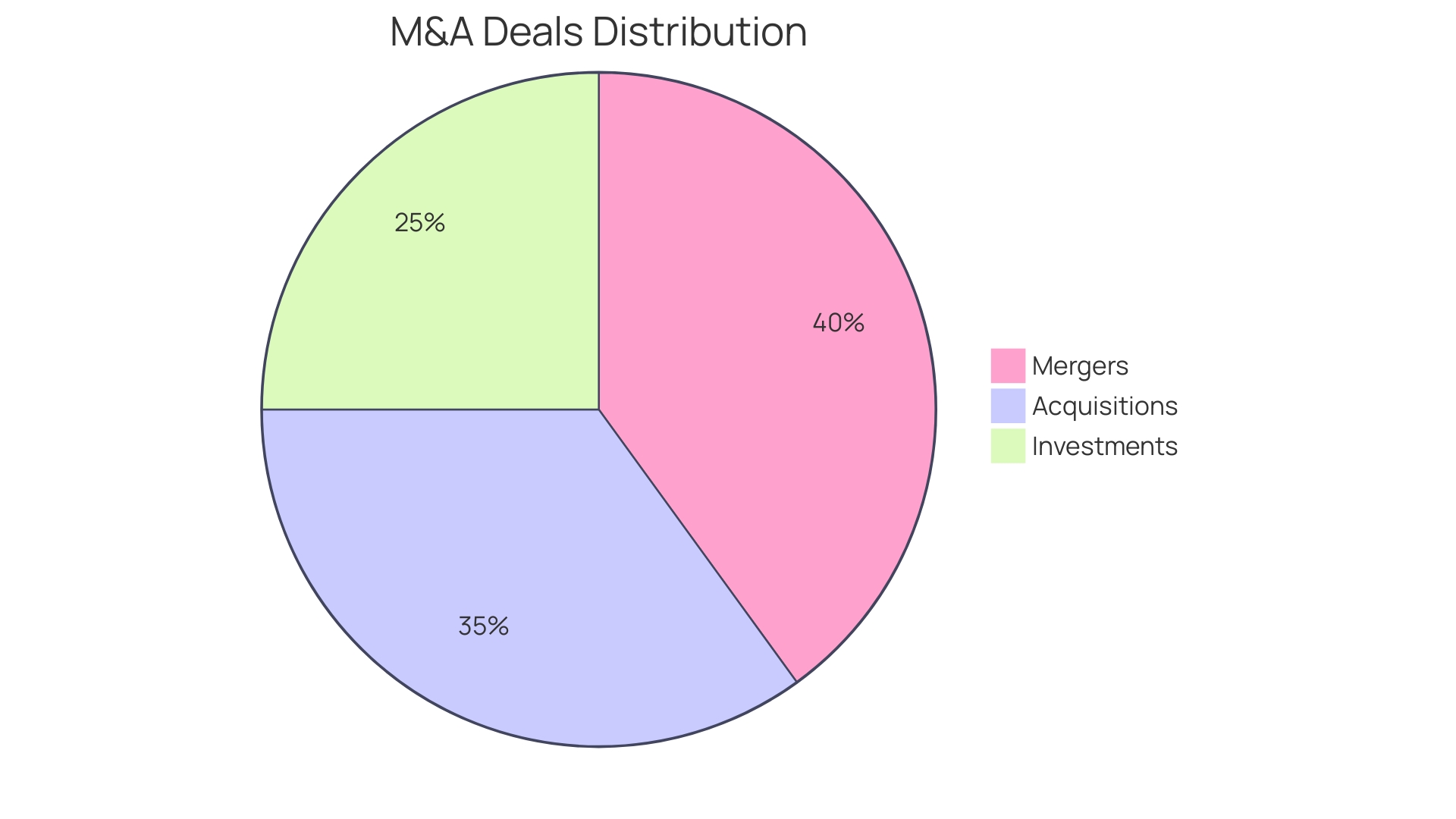
c. Market Capitalization
Capitalization is a commonly used measure to assess the size and investment appeal of a company by multiplying the current stock price with the total number of shares outstanding, in the marketplace.
In today's changing economic environment where unicorn startups—those valued at $1 billion or more—are on the rise, it is crucial to differentiate between the market worth and the intrinsic worth of a company. As Bains study reveals, the true measure of a unicorn's value lies in its capacity to generate cash flow, from operations, a rare accomplishment despite the widespread trend of lofty valuations.
The size of a company's worth has an effect on investment approaches and the overall financial markets, along with ETFs and automated trading, which have significantly influenced the process of determining prices by potentially impacting the sum of business worth from different companies, each with different levels of performance.
In today's era of abundant information and the significance of data accessibility, play a role in comprehending crucial insights and trends in the financial landscape provided by the Sec's EDGAR system, which offers a wealth of data, from public filings that goes beyond market capitalization figures to present a comprehensive view of a firm's financial well-being over time.
d. Enterprise Value (EV)
Determining the worth of an enterprise goes beyond just assessing its market capitalization; it involves considering Enterprise Value (EV), a crucial financial measure that takes into account not only the organization's market worth but also factors in its complete financial setup. EV combines the valuation with debt and takes into account cash and cash equivalents, on hand to provide a comprehensive view of a firm's financial position. When evaluating the worth of a tech enterprise, for example, the position in the industry and intellectual properties are factors to consider.
Tech organizations typically take the forefront in generating concepts and resolutions; their value is determined by their position in the industry and their capability to surpass rivals while protecting the rights to their inventions and developments. For instance; a company that possesses a share of the industry and has a history of continuous innovation along with strong safeguarding for its intellectual property might be valued higher due to the potential of sustaining an advantage, over competitors and growing further. The conventional method of evaluating cash flows using a Cash Flow (DCF ) analysis may have its flaws, in predicting the uncertain future cash flows of the software industry.
Warren Buffett once emphasized the significance of forecasting cash flows to evaluate value in business decisions - a principle that holds importance in the rapidly changing technology industry landscape today. Besides this, the software sectors prioritize growth at the expense of profits, which further complicates how companies are valued using conventional profit-based criteria. Business experts point out that true success in business involves more than making money; it entails creating long-term value by balancing innovation and responsiveness to customer demand with short-term financial measures, for software enterprises.
Specialized Valuation Methods
Valuating industries like real estate and software demands strategies that extend beyond conventional measures of evaluation. One example is the use of Real Option Analysis in the real estate sector—a technique that involves weighing the anticipated returns, against the total expenses involved in a project to determine its financial viability. This requires an assessment of all costs linked to the investment beyond just the initial purchase price to predict potential profits in advance. In the software field as in industries too like it greatly depends upon grasping a company's standing and competitive strength to ascertain its worthiness for valuation purposes. Key determinants such as share percentages along with growth patterns and capacity for innovations play a role in this assessment. For example; A software company that prides itself on having a strong presence in the industry—supported by customer loyalty and unique product offerings, along with technological advancements—tends to have a higher value due to its ongoing competitive advantage.
The Replacement Cost Method is an approach that comes into play when evaluating property damages and its crucial to clearly define real property damage accurately in this context This technique revolves around determining the cost of replacing the asset at present rates. A principle that aligns with the insurance sectors emphasis, on clear terms and reasonable pricing practices. Special valuation techniques are tools for understanding the distinctive traits and possibilities of various industries or economic situations. Whether it involves concrete assets like property or intangible assets, like a software firms intellectual property.
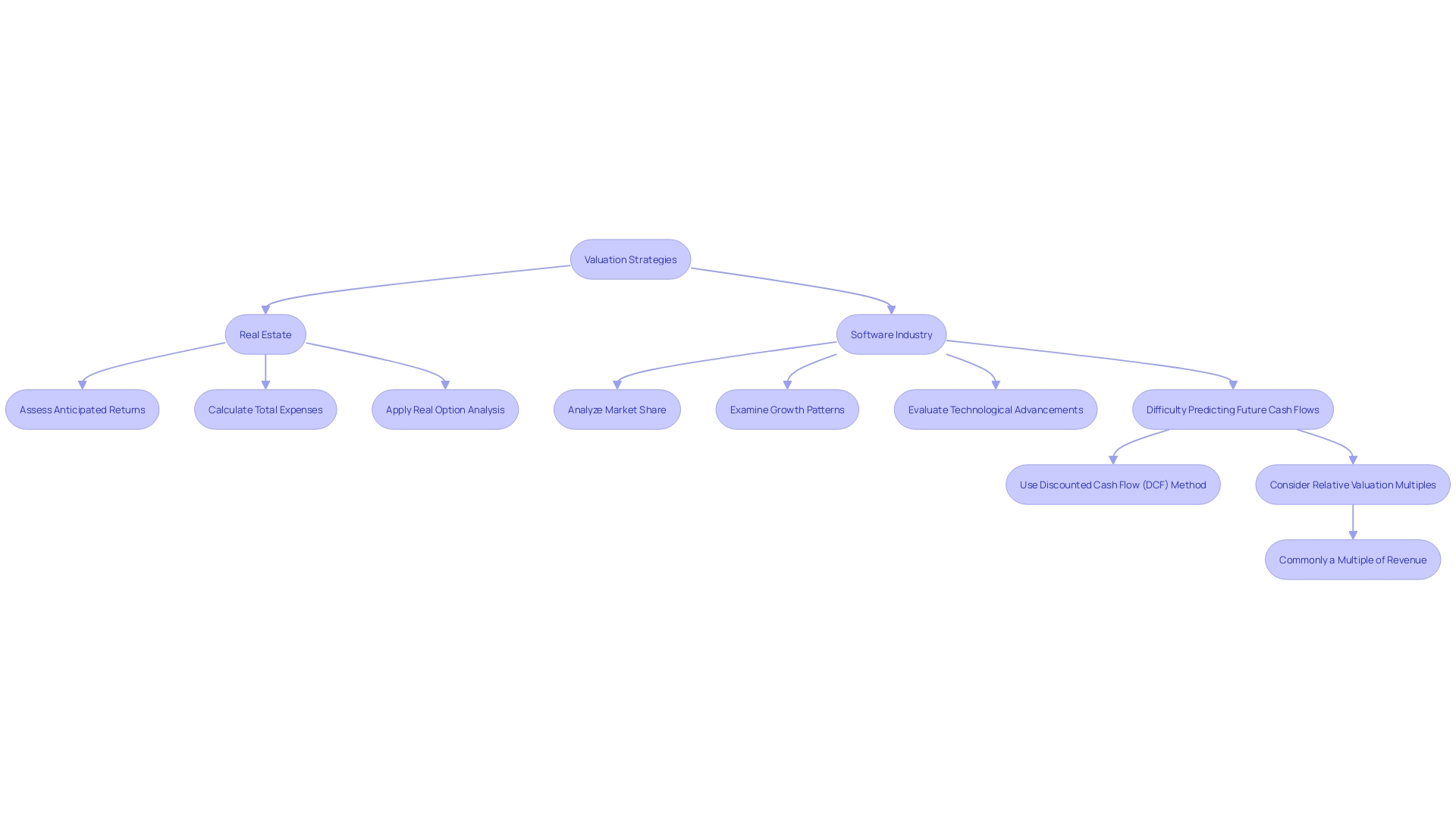
a. Real Option Analysis
Real Option Analysis highlights the decisions available to a company's disposal in industries filled with uncertainty or driven by expectations of future growth and value creation opportunities. Through this approach companies such as John Dee Warwick dealing with the nature of meat production can strategically manage their expansion in response to economic fluctuations. Soeren Schauki, Business Development Manager at Dematic points out the challenges faced by sectors, like meat processing where product availability is governed by randomness necessitating flexible and informed decision making processes.
Besides the changing nature of markets and the impact of technologies such as AI, Real Option Analysis plays a vital role by helping businesses evaluate different design options and scenarios. This enables them to make strategic decisions in a landscape that is becoming increasingly intricate due to industry complexities and rapid technological progress. For instance the recent actions taken by the Federal Reserve to manage inflation rates highlight the importance of this analysis with the growing dependence on AI, across different industries.
Businesses typically depend heavily on data and powerful analytics tools such as Preqin to steer their strategic choices effectively. Having access to in depth insights greatly enhances the decision making process when using Real Option Analysis principles, which Bob Iaccino highlights as having dimensions, in equity options. The adaptability offered by Real Option Analysis is vital for firms to take control of their future and remain flexible in an environment where evolution and progress are always present factors.

b. Replacement Cost Method
Evaluate the value of a business involves navigating through complexities especially when dealing with unique assets that are not easily replicated. The Replacement Cost Method sheds light on this matter by considering the rates in the industry for replacing a firm's assets. This is particularly important, in sectors where distinctiveness and the expense of reproducing assets greatly affect a firm's worth. In the domain of software development and technology companies, consider for example. Factors such as the firm's dominance in the industry, brand visibility, and customer loyalty are crucial when assessing the value of its holdings. Furthermore, the intellectual capital (IP) of a business contributes to establishing its worth. A comprehensive audit of property encompassing both officially registered and informal rights is essential, for understanding the complete extent of a firm's competitive advantage and standing in the market. This cautious approach appeals to investors who comprehend that an organization's value extends beyond its tangible assets to encompass the intangible factors that drive innovation and competitive advantage.
Choosing the Right Valuation Method
Identifying the appropriate assessment approach for an enterprise entails taking into account various aspects such as the sector in which it operates and its financial condition during different periods of growth, in addition to specific situational factors that could impact the accuracy of its valuation. To gain an understanding of your organization's value estimation process involves combining insights from different valuation methods effectively suggested by professionals in the field such as the Berkus Method developed by investor Dave Berkus in the 1990s which emphasizes evaluating early stage startups without revenue by assigning importance to crucial organizational elements. In the world of finance and investing strategies like discounted cash flow (DCF) though theoretically sound may not always be dependable according to Warren Buffett's observations due to the uncertainties involved in predicting financial trends over the long term. When it comes to software firms valuation processes are greatly affected by their market standing and competitive edge with aspects such as market share and innovation playing a role, alongside intellectual property assets. In today's evolving business world, there are approaches that concentrate on not only the financial but also social and environmental aspects when evaluating the value of a corporation. This promotes an transparent valuation method that emphasizes sustainability.
Key Considerations for Accurate Valuation
Assessing a business correctly is a crucial undertaking that involves several vital elements in the procedure. Analyzing documents serves as a first step only; additional investigation through due diligence provides insights into the organization's internal operations and management practices. Factors specific to the industry, such as industry position, competitive edge and brand visibility hold sway over valuation outcomes as exemplified by Italmobiliares scenario. This Italian investment firm doesn't just acquire sized enterprises; it also focuses on enhancing their value by enhancing management effectiveness and planning for global expansion strategies while avoiding struggling companies and focusing on those, with strong brands and unique selling points.
Besides that point mentioned earlier about economic circumstances affecting factors to contemplate in the corporate realm... Let's take a look at the phenomenon of unicorns. That is startups which manage to hit a valuation of $ ̶o̶n̶e̶ billion dollars or as an example of this idea in action... Only a small number of these unicorns can actually make profits without needing constant funding, from venture capitalists... This highlights how rare and crucial it is for businesses to have competitive advantages and the ability to fund themselves independently.
Lastly, having an expert on board can be priceless when dealing with complex valuations such as a 409a assessment that determines the accurate market worth of a firm's ordinary shares for issues concerning compensation and tax compliance. This assessment is not a mandated procedure; it also sets the standard, for equity based remuneration to promote equity and avoid sanctions.
Taking into account these various factors during the valuation process helps stakeholders make precise assessments and supports strategic goals to enable better decision making in the long run. It's essential to grasp the intricacies of valuation methods like the Berkus approach, for startups in their early phases or evaluating post money and pre money valuations to accurately determine a company's economic value at different stages of its growth journey.
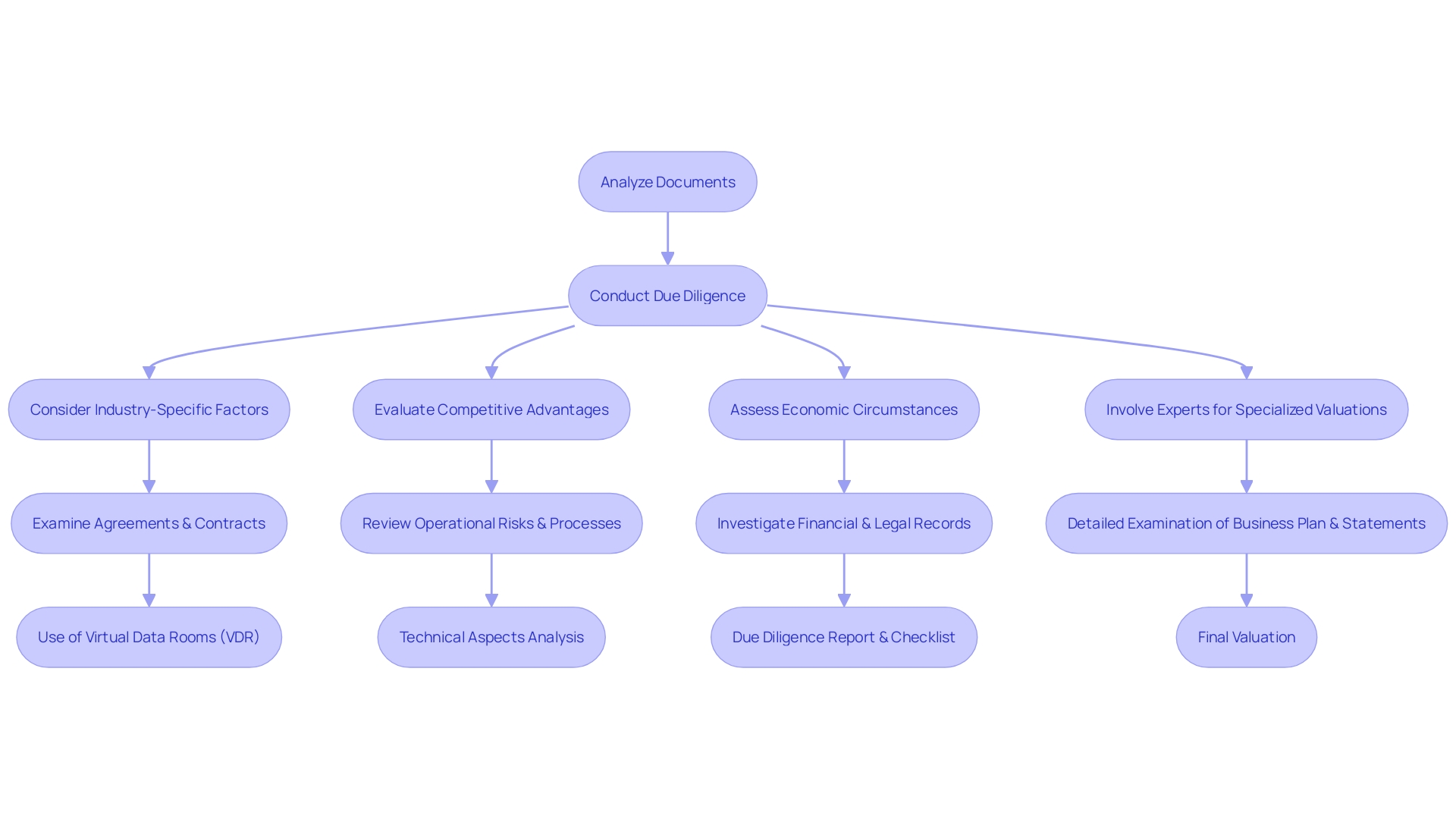
Conclusion
Valuing a company is a step in the business world as it involves more than just numbers. It focuses on the future prospects and competitive edge of the company itself. Assessments of a companys entail a thorough evaluation of key factors, like market position, innovation capacity, financial health and profit reliability.
Various ways of determining value are available; each method has its advantages. Is suitable depending on the industry and the specific circumstances of the company being evaluated. Asset based methods look at assets and their value; income based methods forecast earnings or cash flow; market based methods compare a company to others in the same sector; specialized methods provide distinct approaches tailored for sectors such, as real estate and software.
When deciding on the valuation approach for a companys worth assessment process should take into account aspects such as the sector it operates in and its financial health and unique circumstances involved in the situation at hand. To accurately determine a companys value requires integrating inputs, from valuation techniques to gain a holistic view of its true worth. Precise valuation necessitates a detailed review of paperwork. Conducting thorough research while also factoring in industry specific conditions.
Assessments extend further than the deal at hand. They encompass strategizing for future growth and achievements as critical components of success planning ahead is recommended to stay informed about latest advancements and shifts so as to make educated choices grasping a companys worth empowers stakeholders to make prudent decisions that pave the way, for long term prosperity.
Valuing a business involves a blend of skills and intuition that entails examining aspects with care and understanding to make informed decisions that contribute to sustained value and success, for all involved parties.




